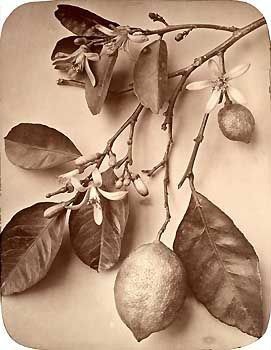The photographic materials of the first decades did not allow any particularly penetrating plant studies, mainly because of the negative material’s lack of sensitivity to certain tones in the colour spectrum. But as techniques developed, photographers rapidly came closer to the abstract patterns of nature. Since long exposures were still necessary, many photographers worked in their studios where they could control the light.
The Italian photographer Pietro Guidi and the French photographer Adolf Braun photographed plants as early as the 1850s. August Roesler, born in Germany but working in Sweden photographed plants in his Stockholm studio and he also hand-tinted the images. In 1903 the Swedish photographer John Hertzberg made use of a three-colour gum-print technique to produce an early form of colour photography.
On his mother’s side of the family, Henry B. Goodwin had a well-known botanist who may have influenced him, during the latter part of his career in the 1920s to document a succession of plants at his summer residence on Utö in Stockholm’s archipelago as well as during trips to southern Europe. In 1926 Goodwin published a gardening book for beginners entitled Med täppan som sommarnöje.
The botanist Karl Blossfeldt started studying plants in 1900 and in 1928 he published Urformen der Kunst which was published in a Swedish translation in 1930. The book created a great deal of interest among both botanists and photographers on account of its penetrating pictures. Sweden’s first professor of photography, Helmer Bäckström at the Royal Swedish Institute of Technology, produced a number of photographs which may have been inspired by Blossfeldt’s work.
The American Brett Weston produced plant portraits that were more penetrating and psychological than anybody had previously produced. His landscapes and plant studies show a technical excellence that makes the pictures particularly fascinating. His father, Edward Weston, who was the first photographer to receive a Guggenheim award, undertook a photographic odyssey through California and Oregon during the 1930s. Besides all the landscape pictures he also made a number of plant studies during the trip.
Paul Strand, who was born in the USA but who worked in Europe for many years, photographed plants in his French garden. Irving Penn, fashion photographer sans pareil, also photographed still lifes in which plants were an important element. The American photographer Kipton Kumler has also studied plants in detail and produced images as platinotypes in which the sub-tones are given exquisite nuances in the picture.
Selection and comments: Leif Wigh

